Some of the links in this post may be affiliate links.
Ficus Audrey, or Ficus benghalensis, is a fantastic newer houseplant to the scene and also an amazing alternative if you are frustrated with the very intolerant and often finicky Fiddle Leaf Fig!
Let’s go over some pieces of care advice as well as some frequently asked questions to help you troubleshoot some common problems.
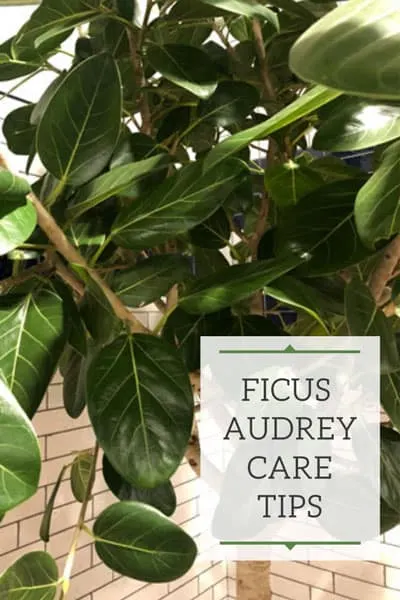
Table of Contents
Ficus Audrey in Nature
Before I go into care of this plant in the home, I wanted to give a few basic details of where and how this plant grows in nature because it’s fascinating, and gives us a better appreciation of the plant.
You may have heard the names Banyan Tree and Strangler Fig before, and they are actually just common names for Ficus benghalensis. It is native to India and Pakistan, and is considered the national, sacred tree of India.
Ficus Audrey is a type of strangler fig. Sounds violent right? The plant actually begins its life growing as an epiphyte on other trees. Then as it grows, it completely surrounds the host tree and prevents the host tree’s trunk from expanding.
At the same time, the Ficus benghalensis leaves will take over and smother the foliage on the host tree.
Aerial roots start to grow and hang down. Once the aerial roots reach the soil surface, they start to grow into trunks.

Eventually this tree completely envelops and smothers the host tree and the host tree dies.
Since these plants can grow to enormous proportions, they are often planted for shade. In fact, it is one of the largest trees in world for canopy coverage.
As you can imagine from how they grow in nature, they are quite resilient plants and rewarding to grow indoors!
The Buddha was said to have received enlightenment while sitting under a Banyan tree.
Ficus Audrey Care
As I mentioned, if you have been thoroughly frustrated with growing Fiddle Leaf Fig (Ficus lyrata), give Ficus Audrey a shot.
I lost count of how many of my Instagram followers have killed their Fiddle Leaf Figs. Many beginning houseplant enthusiasts have had a hard time, so try this alternative and save yourself the pain!
At least until you learn and become a master at houseplant culture. Think of the Audrey as training wheels 🙂 . They do make equally beautiful plants and are very satisfying to grow.
LIGHT
Be sure to give your plant plenty of light for best results or you will be disappointed with this one as well. Eastern windows are fantastic if you have one.
Western and Southern exposure would also be great, but depending on where you live and how strong the sun is, you may want to filter the direct sun in these exposures.
Where I live in Northern Ohio, I can probably give these plants full sun in the winter time. Actually, I could probably give most plants I have “full sun” in our wintertime when the sun is very weak and the days are very dark.
Whatever you do, please make sure that it is close to a window. You can’t expect a plant to thrive if you place it several feet away from a window . Aim to be within a foot or 2 from a window or less.
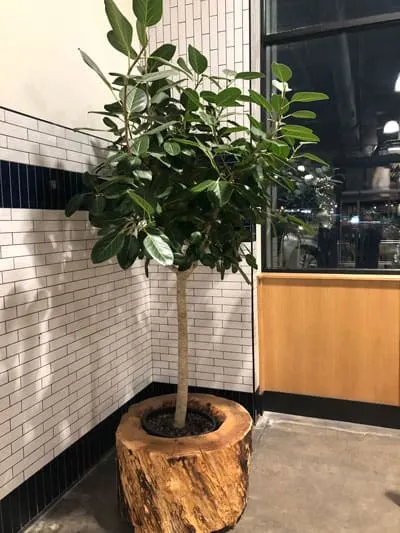
TEMPERATURE
Ficus in general are warm growing plants so aim for temperatures of 60F or so and above. If you are comfortable indoors, your plant will be too.
Avoid any very hot or very cold drafts because Ficus in particular despise this .
WATERING
Ficus can be very finicky if you have extremes in soil moisture, so take care to avoid this.
The care for this plant is pretty similar, if not identical to the common Rubber Plant which I also wrote a blog post on.
Always water your Ficus Audrey thoroughly until water exits the drainage hole(s). Discard excess water and make sure your plant doesn’t sit in water for extended periods or you may be quickly inviting root rot!
Ficus are particularly prone to imbalances in soil moisture (and overall bad culture in general). They’re just not that forgiving with too much abuse!
Wait until the surface of the soil dries out completely before watering again. If you have a small pot, maybe allow the top inch or so to dry out. If you have a large pot that is 10 inches or more, approximately, you might want at least 2 inches or so to dry out.
Use your finger to judge the soil moisture by feeling the soil.
If you have extremes in soil moisture (too dry or too wet), you will have some leaf loss. I’ll talk more about this in the Frequently Asked Questions section.
Moral of the story: Don’t let all of your plant’s soil dry out completely. At the same time let the top 1-2 inches or so to dry out completely and then water again.
And water thoroughly! So many people are afraid to “overwater.” I personally hate this term and misconceptions are running rampant over what overwatering actually is.
Be sure not to miss my blog post on the topic of overwatering. You will be shocked to know what it really means and most importantly, DOESN’T mean!
Proper watering is a cornerstone of houseplant health (along side good light) so it is important to get it right!
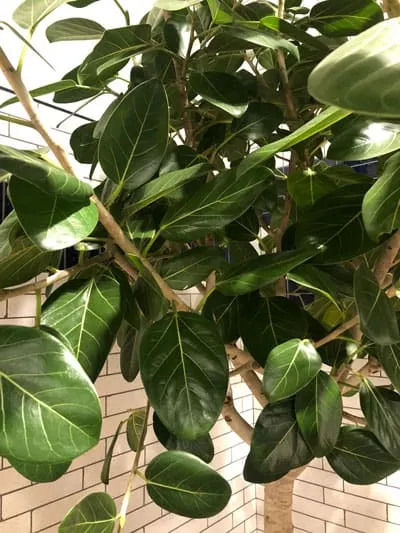
FERTILIZING
Use any good all-purpose fertilizer through the main growing season. I usually refrain from fertilizing in the dead of winter if my plant stopped growing.
Throughout most of the year though, I like to fertilize dilutely with every watering. This way I don’t have to remember when I last fertilized.
My favorite houseplant fertilizer that I use for all my tropical foliage plants is Dyna-Gro Grow which is available on Amazon.
I simply add 1/4 teaspoon to a gallon of water and use it every time I water from about February until October or so.
Dyna-Gro Grow is a premium fertilizer, urea-free, and contains all the micro and macro nutrients plants need to thrive. I get great results from using this fertilizer and I highly recommend it!
SOIL MIX
Any Ficus demands excellent drainage. I plan on writing a post on the topic of soil mixes, because they are not all created equal.
As a general potting mix for most plants, I like to use 3 parts of a good potting mix, like Miracle Gro and 1 part of perlite.
This results in a fluffy mix that retains enough water, yet drains well and dries out in a reasonable amount of time. All of this is critical.
You can purchase my recommended products below from Amazon:
You can even add orchid bark to your mix, but it is not necessary. Sometimes if have any left over, I’ll add some of that to mix as well. It improves the drainage even more.
Sticking with the blend I mentioned above will serve you well for virtually any terrestrial tropical foliage plant.
If you’re looking for an amazing potting mix that you can use straight out of the bag for your Ficus, check out the Rainforest Soil Blend from Oh Happy Plants. This is an amazing mix and you will get 10% off at checkout automatically if you use my link.
POT SIZE
My rule of thumb for repotting is only repot into a pot that is one size bigger than you’re currently in.
For example, if your Ficus Audrey is in a 8 inch pot and needs to be repotted, use a 10 inch pot and no bigger.
If you repot into a pot that is much too big, the soil will stay wet much longer and not dry out as much. Ficus can be very finicky with this so it is especially important for these plants.
Are you wondering how do you know when to repot, and also how to repot? Be sure not to miss my blog post on repotting houseplants for some very important tips that are absolutely critical for success.
PROPAGATION
There are two easy ways to propagate your Audrey.
If can take cuttings of your plant and the stems are not woody, you can either place them in water to root, or place directly into soil.
If you choose the soil method, dip the cutting in rooting hormone, place into a pot of soil and cover with a plastic bag to make a mini-greenhouse for humidity.
If you have a woody stem, the method above will not work. I would recommend using the air-layering method.
PESTS
There are a variety of pests that your plant can get, but some of the most common may be spider mites and scale.
SPIDER MITES
Spider mites are tiny, form fine webs on your plants, and will eventually cause splotchy discoloration on the leaves.
Learn about 3 natural ways to deal with spider mites.
Detecting them early is very important as these dreaded pests can quickly get out of control.
SCALE
Scale is another awful pest that can quickly go out of control so early detection and prevention is key!
Make sure you inspect the entire plant, including stems and under the leaves. Scale will appear as little brown, hard shells that can be found on the leaves and stems.
If I see any scale on any of my houseplants, I like to gently scrape it off with my finger nails.
After that, I will dip a cotton ball or paper towel into rubbing alcohol apply to the locations where I took the scale off.
Again, it is very important to be observant and monitor your houseplants closely on a routine basis in order to better control pest outbreaks.
MEALYBUGS
Mealybugs can be horrible if they get out of control. It is best to detect them early. They appear as white, cottony masses. Check out my post on treating mealybugs.
Frequently Asked Questions
Here are some common problems that you can experience with Ficus Audrey, and really any Ficus.
Why is my plant dropping leaves?
Something has shocked it. Either having the plant in a new environment, stress during repotting, improper watering or a combination of any of these.
If you have just purchased your plant, allow it to acclimate to your home before you do anything to it. Place it in the appropriate light as described earlier in this blog post, and avoid repotting or fertilizing for a few weeks.
Plants need time to adjust to their new environment.
Another reason your plant may be dropping leaves is by extremes in soil moisture (too dry or too wet). Be sure to carefully follow my recommendations in the watering section of this post.
Why are my plant’s leaves curling?
The most common cause is improper watering and soil moisture. When you notice the curling, feel the soil. Has it been wet for a while? Or maybe completely dry for a while?
If you follow the advice in the watering and light section of this post, you can avoid this issue.
Leaves turning brown?
With any plant problem, there can be numerous reasons why things are happening. The same goes for leaves turning brown.
If you have your plants too close to a heating vent, your leaves can turn brown.
If your plant is extremely root bound, it is difficult to provide enough moisture to the roots, and you may get browning of the leaves and they will fall off. This can also cause the leaves to curl.
If you are not adding enough water with each watering because you are scared to overwater, your leaves can also turn brown if you are not moistening the entire root system.
Browning leaves can also come from very dry soil, and also from keeping the soil TOO wet.
It is important to check the soil with your finger though to determine which one it is. Refer to the watering section of this post and be sure to follow those tips for success!
Are you supposed to cut the brown leaves off of plants?
If the entire leaf, or most of it, has turned brown, it is OK and recommended to remove the leaf.
If only the tips are brown, just use a pair of scissors to cut the brown edges off.
Brown spots?
This could potentially be a bacterial or fungal infection. Bacterial infections typically have brown spots with a yellow halo, whereas fungal infections typically don’t have the halo.
Poor air circulation and soil that is too wet can help to bring the issue on.
Brown spots can also be explained by something called oedema. This is a physiological condition that happens when your plant takes in too much water too quickly.
Often times oedema will manifest itself on the undersides of the leaves and you will get discolored spots, and can even get bumpy. This can be caused by cool temperatures, soil that stays too wet, poor light and often a combination of these.
Leaves turning yellow?
Leaves will turn yellow if your plant is suffering from water stress. If your soil has gone too dry, the lower leaves on the plant will respond by starting to turn yellow. Then they will turn brown, or may just fall off the plant.
Soil that is too wet can also cause yellowing of leaves. Be sure to check out my blog post that details the many reasons why plant leaves turn yellow.
Important Closing Comments
Ficus Audrey, like any Ficus, can be finicky but if you follow good cultural practices, you have little to worry about!
When you notice anything wrong with your plant, most of the time it is either due to changes in environment, light issues, or watering.
When you notice something wrong with the leaves and there are no pests present, you should start troubleshooting by immediately feeling the soil. Extremes in moisture are not tolerated by any Ficus.
If your plant has stayed bone dry for a while, or wet for too long, you can be sure that you will get at least one of the issues described above.
By employing appropriate light, proper watering practices, regular fertilization and occasional repotting, you should have very few issues!

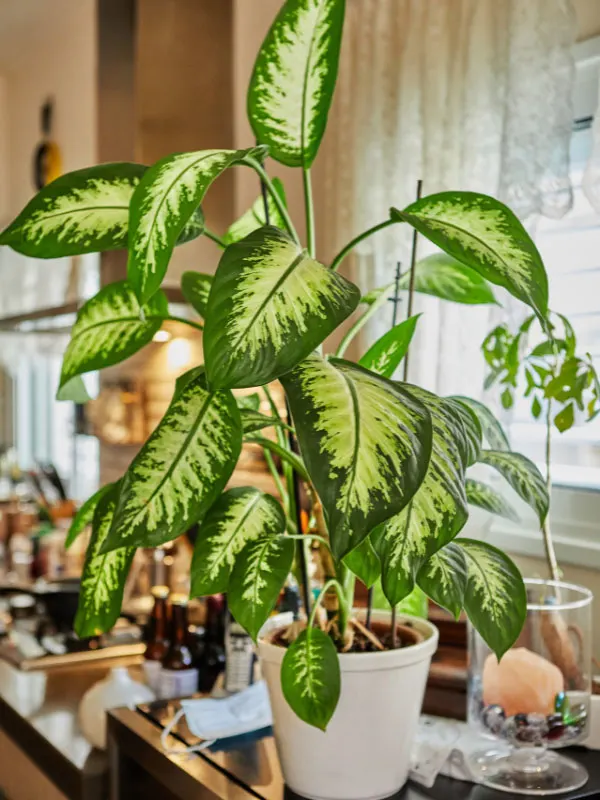
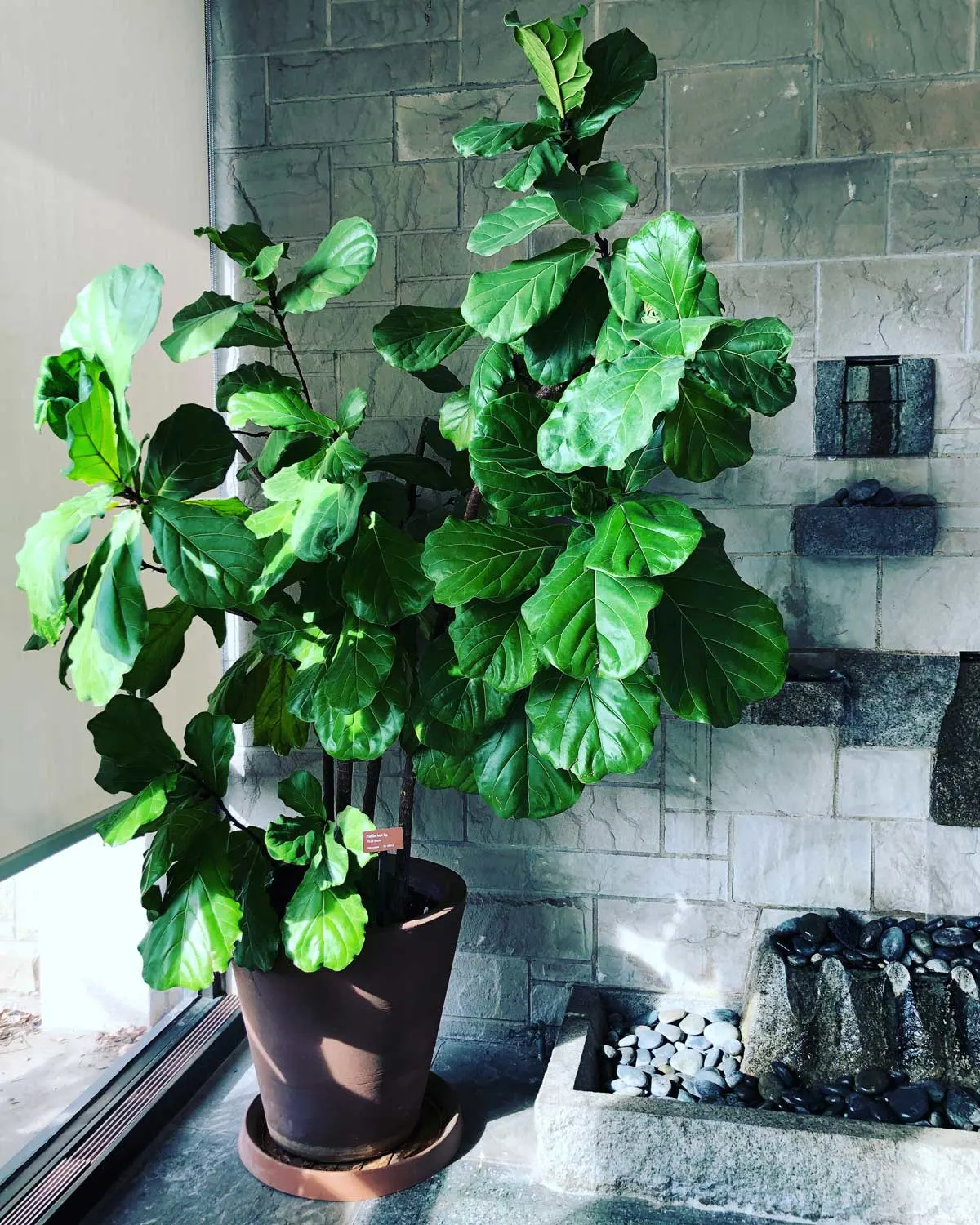
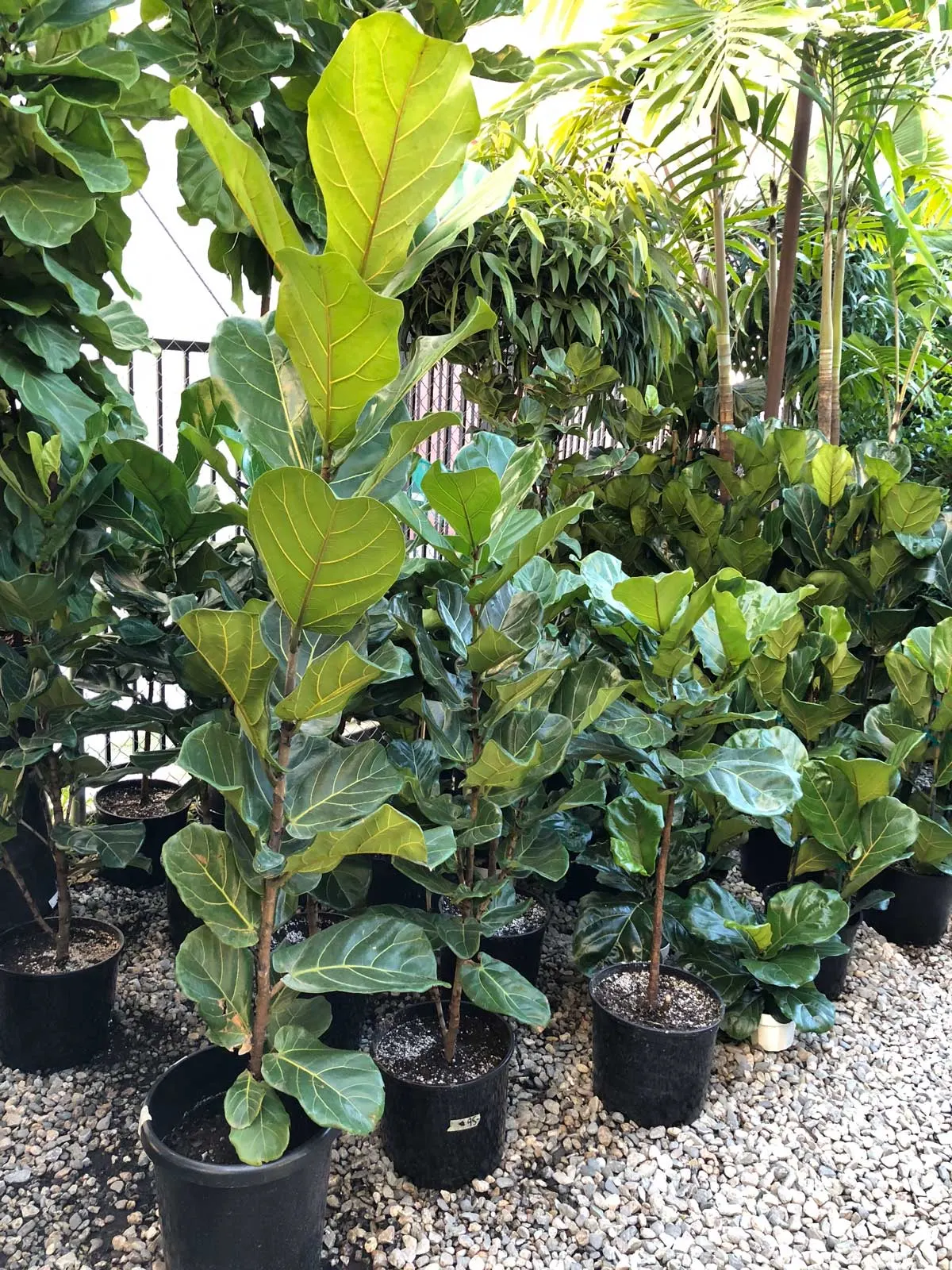
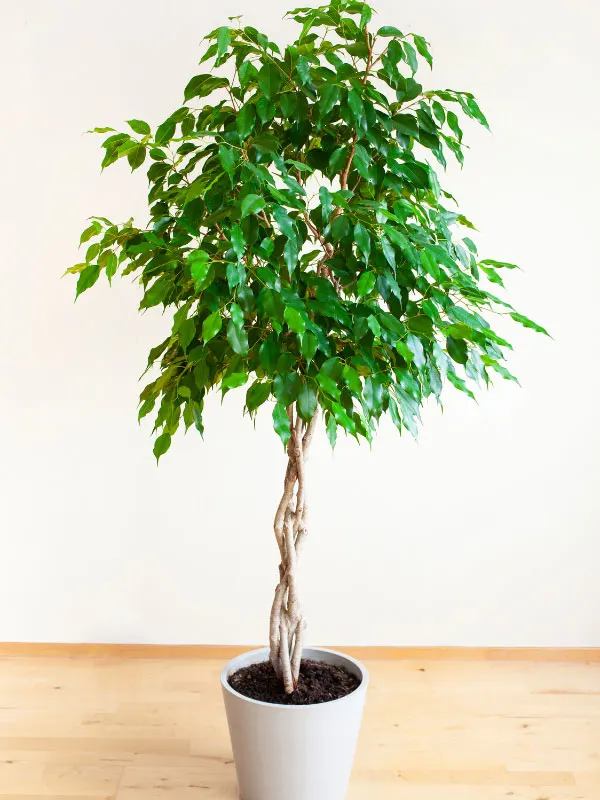
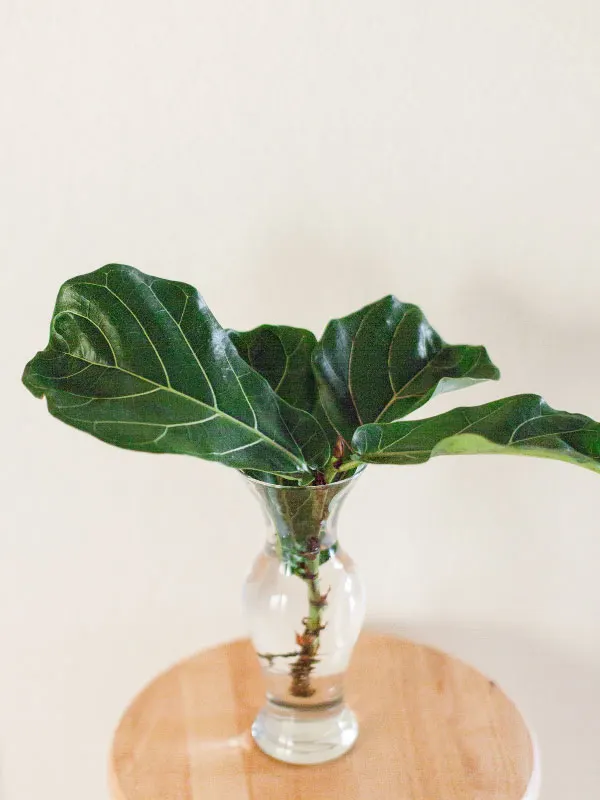
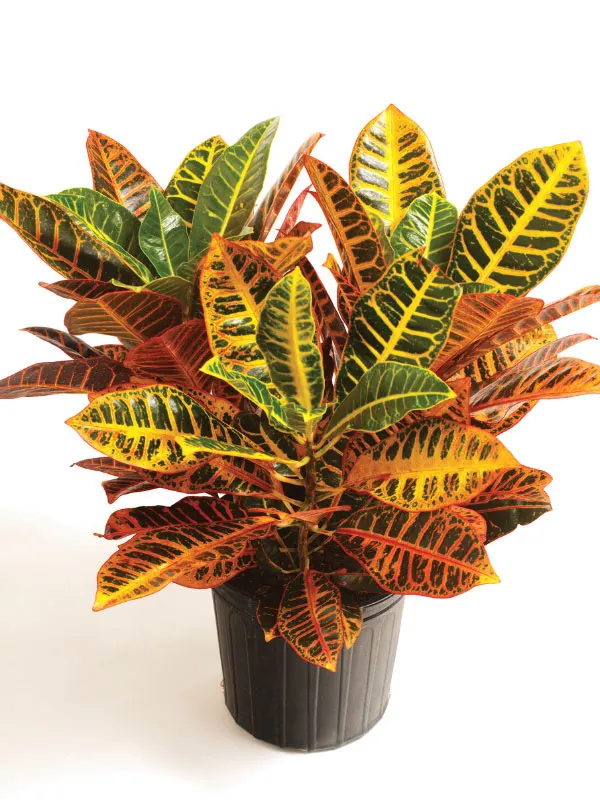
Alexandra
Wednesday 3rd of April 2024
Thank you, Raffelle! I just bought one Ficus Audrey today and it is gorgeous. It does look a lot like Fiddle Leaf Fig.
Raffaele Di Lallo
Friday 5th of April 2024
You're very welcome Alexandra! I hope it does well for you :-)
Lou
Thursday 23rd of March 2023
My Ficus audrey as black spots on the leaves. What's the best remedy?
Raffaele
Friday 24th of March 2023
Sounds like maybe a fungal issue? I'd have to see a photo to better help. You may want to try spraying with a fungicide.
Eileen
Tuesday 15th of June 2021
Hi! I just repotted my Audrey after two years. It was in a terracotta pot and the roots were coming out of the bottom! I went from a 7.5x 7" pot to 9x9" pot. It's a few days later, and now I'm worried that the change from terracotta to ceramic (on top of the general change to a larger pot) was too much? I was careful not to overwater it, and there's good drainage. The one large stem is now drooping down nearly 90 degrees, though the leaves still look good, so far. I'm tempted to put it back in the smaller pot! If you have any advice, I appreciate it! Love your blog/account. Thanks! :)
Raffaele
Tuesday 15th of June 2021
Hi Eileen! Give it a little time. The pot size is fine, and it sounds like it is suffering a little transplant shock, but I wouldn't disturb it again. Glad you enjoy my blog :-) Just be vigilant, and don't be afraid to water the right way (thoroughly soak everything until water escapes the drainage hole, and don't water again until the top 1-2" inches or so is dry). Good luck!
Katie
Tuesday 4th of May 2021
I just bought an Audrey Ficus. I need to repot it. Can you use the miracle grow succulent or the cactus palm and citrus soil blends? I have both
Raffaele
Wednesday 5th of May 2021
Hi Katie! You certainly can, but those will not be as moisture retentive so your plant will dry out more quickly. If you're OK with having to water more frequently, there is no harm at all in using them for your Audrey.
Lauren
Saturday 23rd of January 2021
Hi,
My Audrey has three stalks. On one almost all the leaves have dropped except for a few at the top and those are drooping. It also looks like the stems of those leaves are turning darker. That stalk doesn't feel right either. It's like it's bendy and deflated. Almost wrinkly too. Is there anyway to save it?
Lauren
Wednesday 10th of February 2021
@Raffaele, I can send a photo. I am thinking it might be root rot. It's gets drastically worse after watering. It also is now affecting one of the healthiest branches. I was watering every 7-8 days. Fully watering and then letting the water drain through. The top inch or two of the solid would be dry before I watered. We also don't get good light in our Chicago winters, so I moved it to a west window. It seemed like it was getting a little betfer, but then I found mealybugs. I started treating those and it's taken a turn for the worse.
Raffaele
Saturday 23rd of January 2021
Hi Lauren, I'd have to see a photo to best judge this. Do you know why this happened? Are you doing anything differently from what I described in my post? Did you have any extremes in soil moisture (either too dry or too wet?)